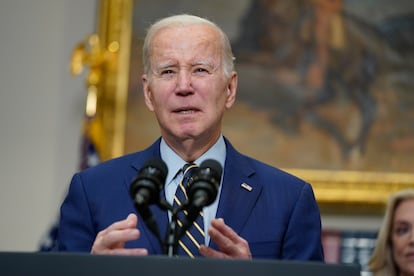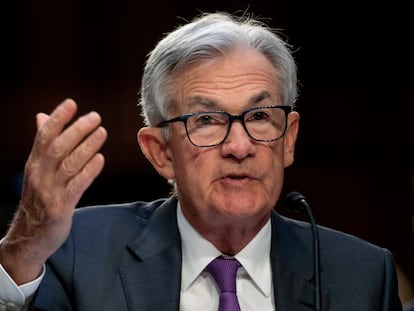The US labor market remains rock-solid: Five key takeaways from the February jobs report
The latest evidence that businesses’ demand for workers is still robust complicates things for the inflation fighters at the Federal Reserve

The American job market has once again confounded expectations. The nation’s employers added a hefty 311,000 jobs last month, the government reported Friday, easily surpassing the 208,000 gain that forecasters had expected.
The latest evidence that businesses’ demand for workers is still robust complicates things for the inflation fighters at the Federal Reserve: They want to see clear signs that the economy and the job market are cooling off before they would consider easing up on their interest rate hikes.
That’s because the stronger the job market is, the more likely employers are to ratchet up wages and the more likely they are to pass on those higher costs to customers by raising prices.
“The labor market remains incredibly tight and given the recent strength in hiring activity, we are unlikely to see much more slowing in the months ahead,’’ said Thomas Feltmate, senior economist at TD Economics.
Still, the unemployment rate ticked up in February, and hourly wages rose only modestly from January. Those trends, if sustained, could help reassure the Fed that inflation will ease.
Here are five takeaways from the February jobs report.
The job market remains rock-solid
In terms of sheer jobs created, 2021 and 2022 were the best years for hiring in government records going back to 1940, reflecting an explosive recovery from the Covid-19 recession of 2020.
As the Fed jacked up its benchmark interest rate to combat resurgent inflation – eight times over the past year – the labor market had been expected to weaken. It hasn’t. In January, employers added 504,000 jobs and then 300,000-plus last month, powerful gains that pointed to high demand for labor.
Caught short of workers when the economy started to bounce back, many companies are reluctant to let them go now, even in the face of higher borrowing costs and anxiety about whether the economy might be headed for a recession. An increase in business startups has also helped drive up payrolls.
Earlier this week, the government reported that employers posted 10.8 million job openings in January. Though that figure was down from 11.2 million in December, it marked the 20th straight month that vacancies have topped 10 million – a level not reached even once before 2021 in government data dating to 2000.
“The economy is still adding jobs at a rapid pace,’’ said Stephen Stanley, chief U.S. economist at Santander U.S. Capital Markets. “The labor market may be gradually cooling, but it is still red-hot.’’
Modest wage gains
Average hourly earnings rose just 0.2% in February, the smallest month-over-month increase in a year. Compared with a year earlier, however, hourly pay was up 4.6%. That exceeded a 4.4% year-over-year gain in January.
Rising wages tend to fan inflationary pressures through a self-perpetuating cycle that triggers higher prices, which can lead to still-higher wages.
“Annual wage growth remains well above the roughly 3.5% the Fed likely sees as consistent with its 2% inflation target,’’ said Nancy Vanden Houten, lead U.S. economist at Oxford Economics.
And rank-and-file workers – production and nonsupervisory employees, in Labor Department parlance – enjoyed bigger hourly pay gains: A 0.5% increase from January to February, up from 0.3% from December to January.
Unemployment ticked higher
The unemployment rose to a still-low 3.6% last month from 3.4% in January, which was the lowest rate since 1969.
But the jobless rate edged higher in February for an encouraging reason: More Americans started looking for work, and some of them didn’t find it right away. As a result, these new jobseekers were counted as unemployed. The Labor Department’s unemployment rate includes only people who are actively seeking a job.
All told, 419,000 people began looking for a job last month. Over the past three months, 1.7 million have done so. The proportion of adults who either have a job or are looking for one – the so-called labor force participation rate – rose last month to 62.5%, the highest level since March 2020.
Oxford Economics’ Vanden Houten called the uptick “a welcome development from the Fed’s perspective as it looks for a better balance between the supply and demand for labor.’’
The share of prime-age Americans – 25 to 54 years old – in the labor force rose to 83.1%, the first time in three years that it’s cracked the pre-pandemic level of 83% in February 2020.
Help wanted at hotels, restaurants and bars
Leisure and hospitality companies added a substantial 105,000 jobs last month. In particular, restaurants and bars added nearly 70,000. Payrolls at those businesses are nearing their pre-pandemic levels.
Hotels added more than 14,000 workers yet are still 238,000 – 11% – short of the number they had in February 2020. Desperate for labor, leisure and hospitality companies have had to sharply raise pay: Hourly wages at those companies have surged 6.9% over the past year.
Jobless rate rises for all racial groups
The uptick in joblessness last month cut across demographic groups. For white workers, unemployment rose from 3.1% to 3.2%. For Black Americans, it went from 5.4% to 5.7%. And for Hispanic workers, the jobless rate rose from 4.5% to 5.3%.
In February, 63.4% of Black Americans were either working or looking for work – their highest labor force participation since 2008.
Sign up for our weekly newsletter to get more English-language news coverage from EL PAÍS USA Edition
Tu suscripción se está usando en otro dispositivo
¿Quieres añadir otro usuario a tu suscripción?
Si continúas leyendo en este dispositivo, no se podrá leer en el otro.
FlechaTu suscripción se está usando en otro dispositivo y solo puedes acceder a EL PAÍS desde un dispositivo a la vez.
Si quieres compartir tu cuenta, cambia tu suscripción a la modalidad Premium, así podrás añadir otro usuario. Cada uno accederá con su propia cuenta de email, lo que os permitirá personalizar vuestra experiencia en EL PAÍS.
¿Tienes una suscripción de empresa? Accede aquí para contratar más cuentas.
En el caso de no saber quién está usando tu cuenta, te recomendamos cambiar tu contraseña aquí.
Si decides continuar compartiendo tu cuenta, este mensaje se mostrará en tu dispositivo y en el de la otra persona que está usando tu cuenta de forma indefinida, afectando a tu experiencia de lectura. Puedes consultar aquí los términos y condiciones de la suscripción digital.
More information
Archived In
Últimas noticias
Most viewed
- Sinaloa Cartel war is taking its toll on Los Chapitos
- Oona Chaplin: ‘I told James Cameron that I was living in a treehouse and starting a permaculture project with a friend’
- Reinhard Genzel, Nobel laureate in physics: ‘One-minute videos will never give you the truth’
- Why the price of coffee has skyrocketed: from Brazilian plantations to specialty coffee houses
- Silver prices are going crazy: This is what’s fueling the rally










































